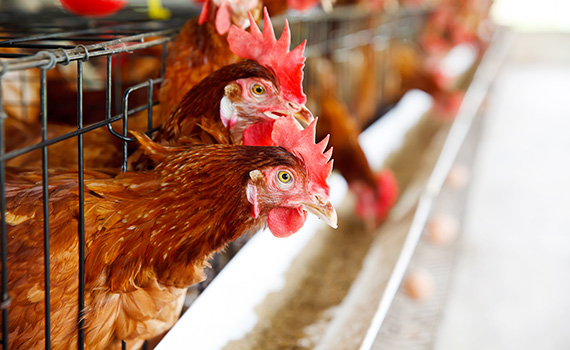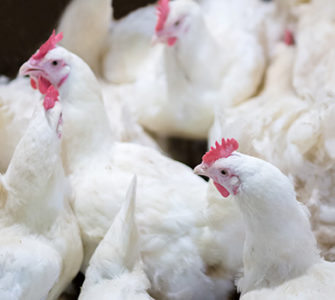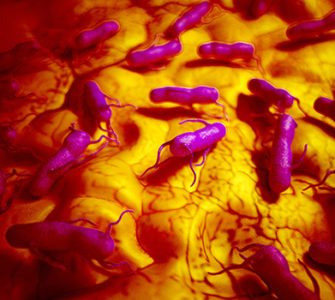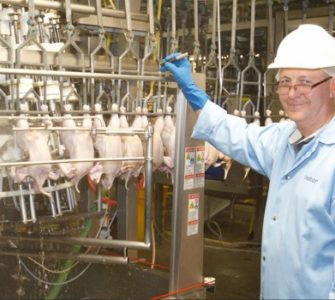Layer-hen stocking density affects Salmonella shedding
Lower stocking density for laying hens was associated with less fecal shedding of Salmonella Heidelberg in a USDA study.
Investigators assessed the effect of layer-hen stocking density on fecal shedding of S. Heidelberg and S. Typhimurium, both pathogens that can cause foodborne illness in humans.
Hens in the study were in a colony cage system with either 973 cm2 per bird, considered low density, or 648 cm2 per bird, considered high density.
There was a third group of layers in conventional cages with 648 cm2 per bird, also considered high density, reports Richard Gast and colleagues of the USDA Agricultural Research Service, Athens, Georgia.
The investigators orally inoculated hens with either S. Heidelberg or S. Typhimurium then subsequently sampled voided feces once weekly for 8 weeks.
The overall frequency of positive S. Heidelberg fecal cultures was 33% for the low-density colony cages, 46% for the high-density colony cages and 51% for the high- density conventional cages.
Shedding of S. Heidelberg continued for 8 weeks in all housing groups, but S. Typhimurium fecal shedding stopped after as few as 5 weeks in the low-density colony cages.
While stocking densities affected the fecal shedding of S. Heidelberg, no significant differences in S. Typhimurium fecal isolation were seen between the different housing groups, Gast and colleagues report in the September 2017 issue of Avian Diseases.1
The results show the impact stocking density can have on intestinal colonization and fecal shedding in laying hens for some Salmonella strains, say Gast and colleagues.
1 Gast RK, et al. Frequency and Duration of Fecal Shedding of Salmonella Serovars Heidelberg and Typhimurium by Experimentally Infected Laying Hens Housed in Enriched Colony Cages at Different Stocking Densities. Avian Dis. 2017;61(3):366-371. https://doi.org/10.1637/11635-032517-RegR. Accessed December 11, 2017
Posted on March 15, 2018

















